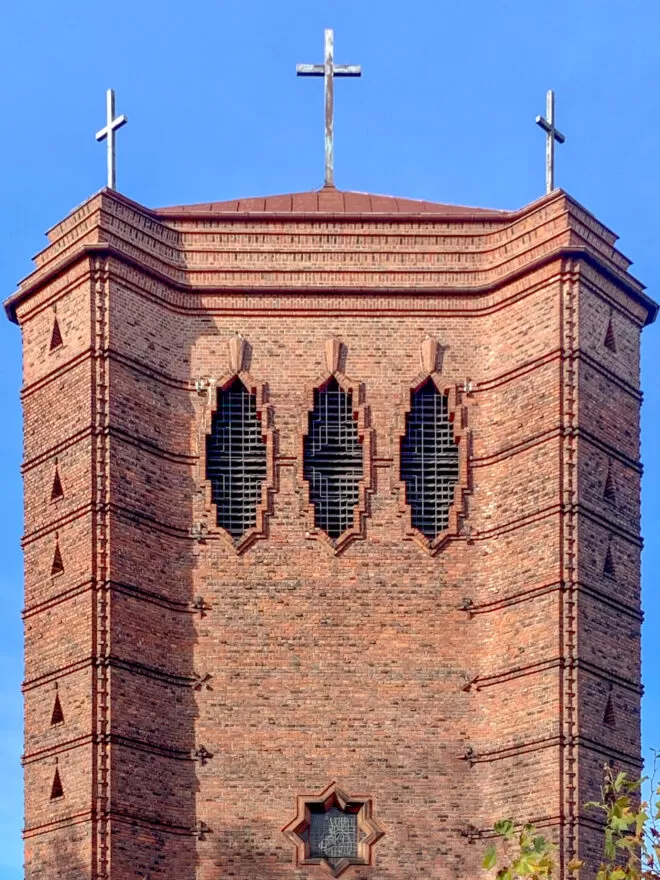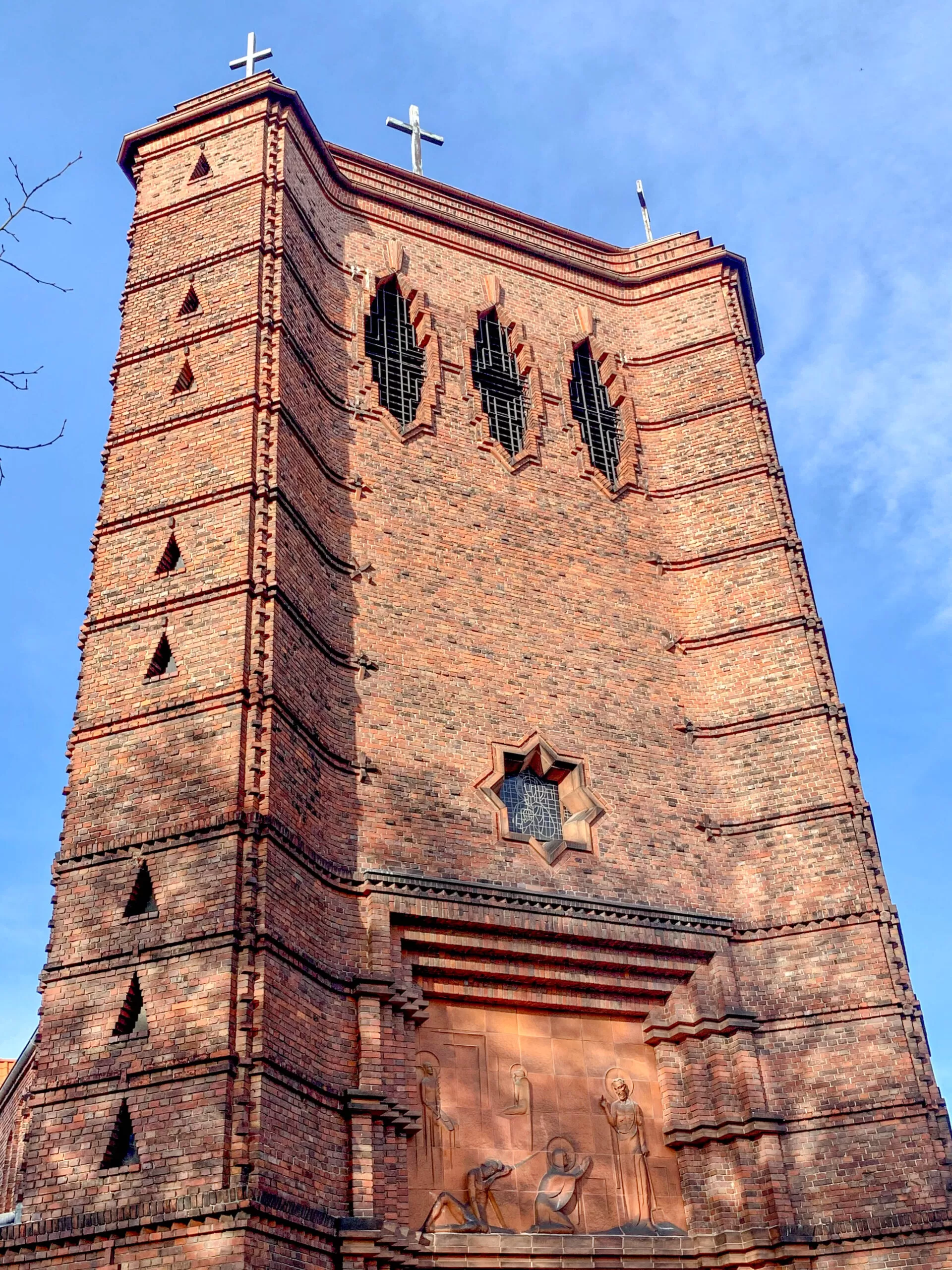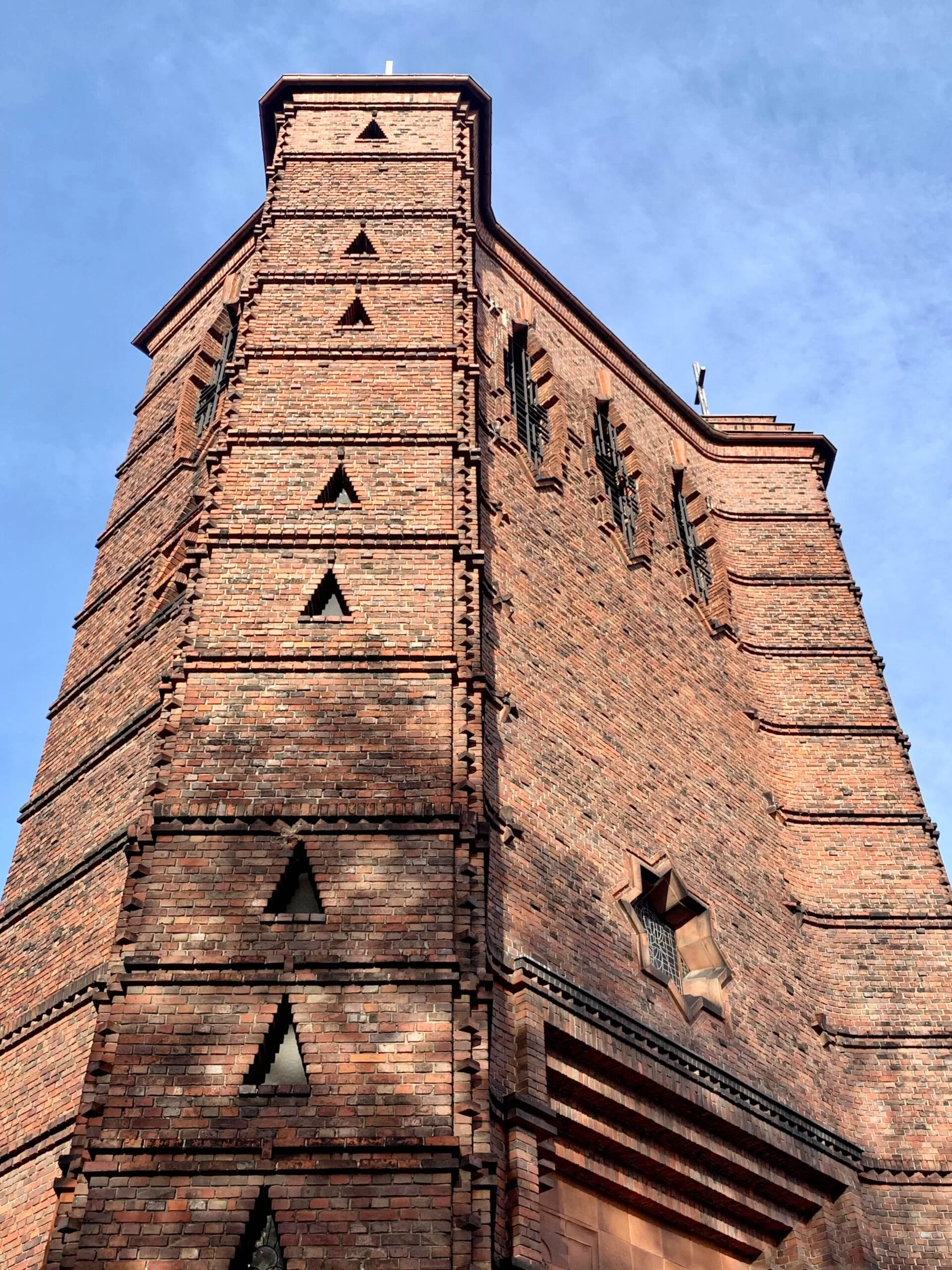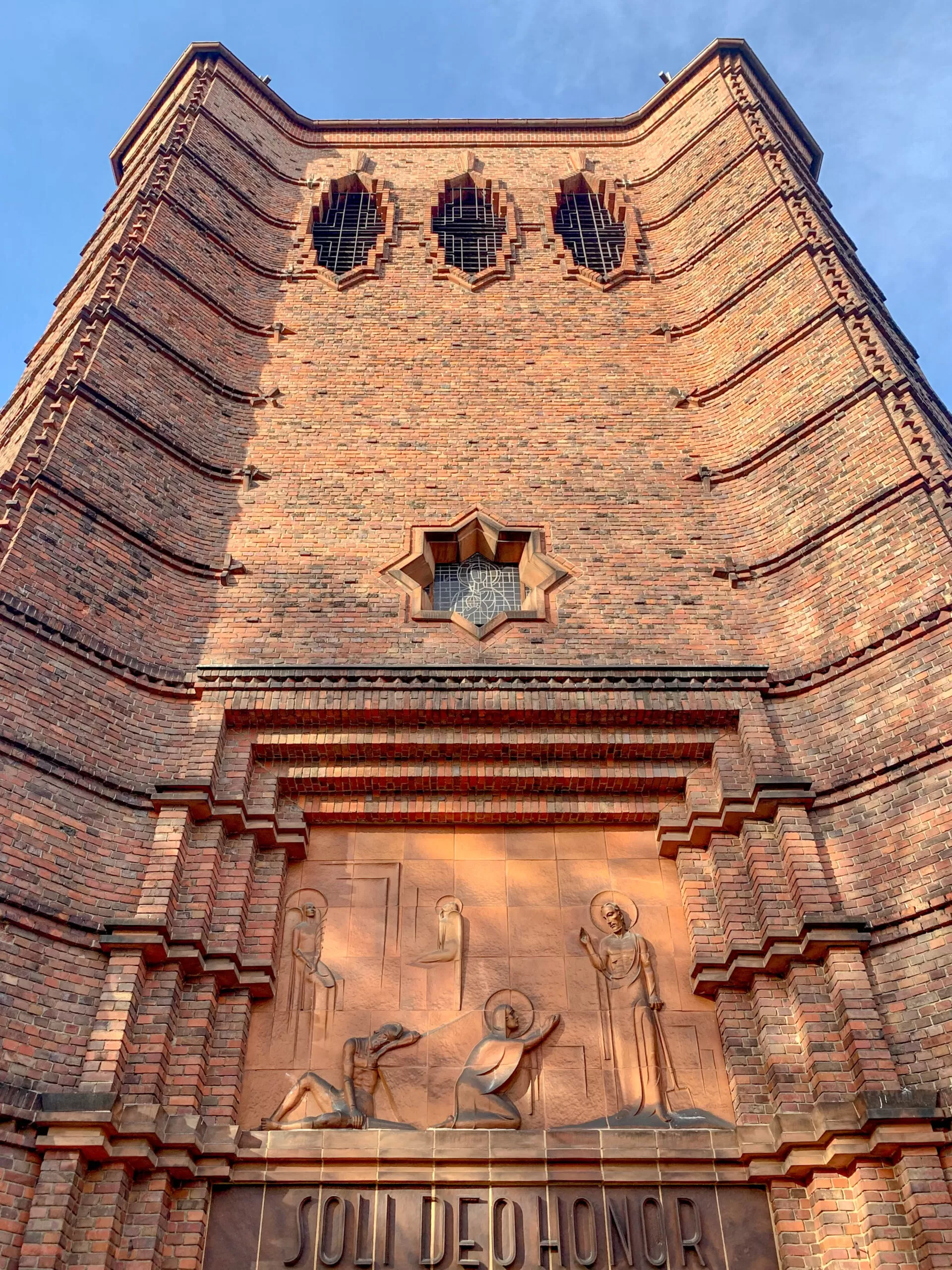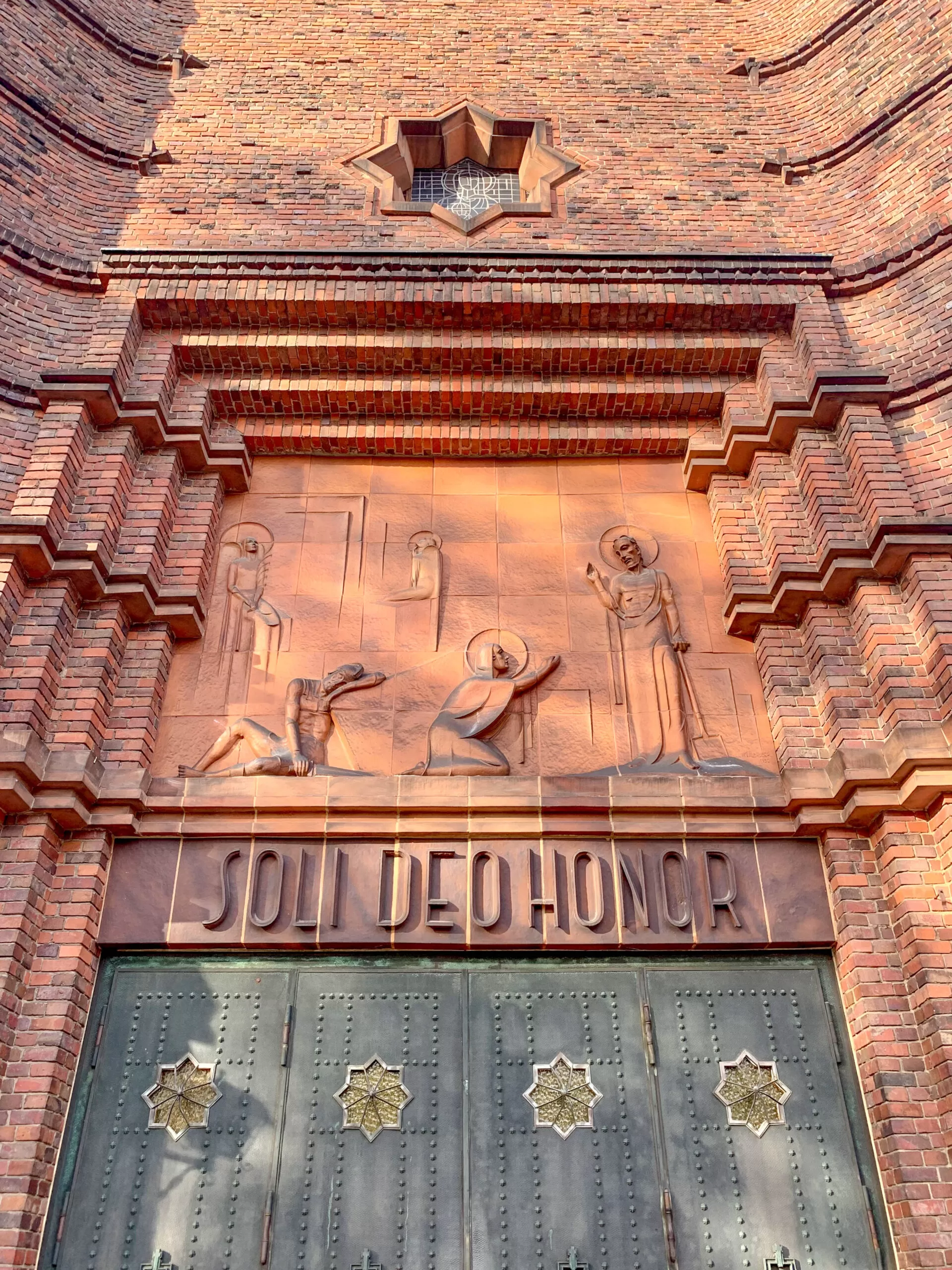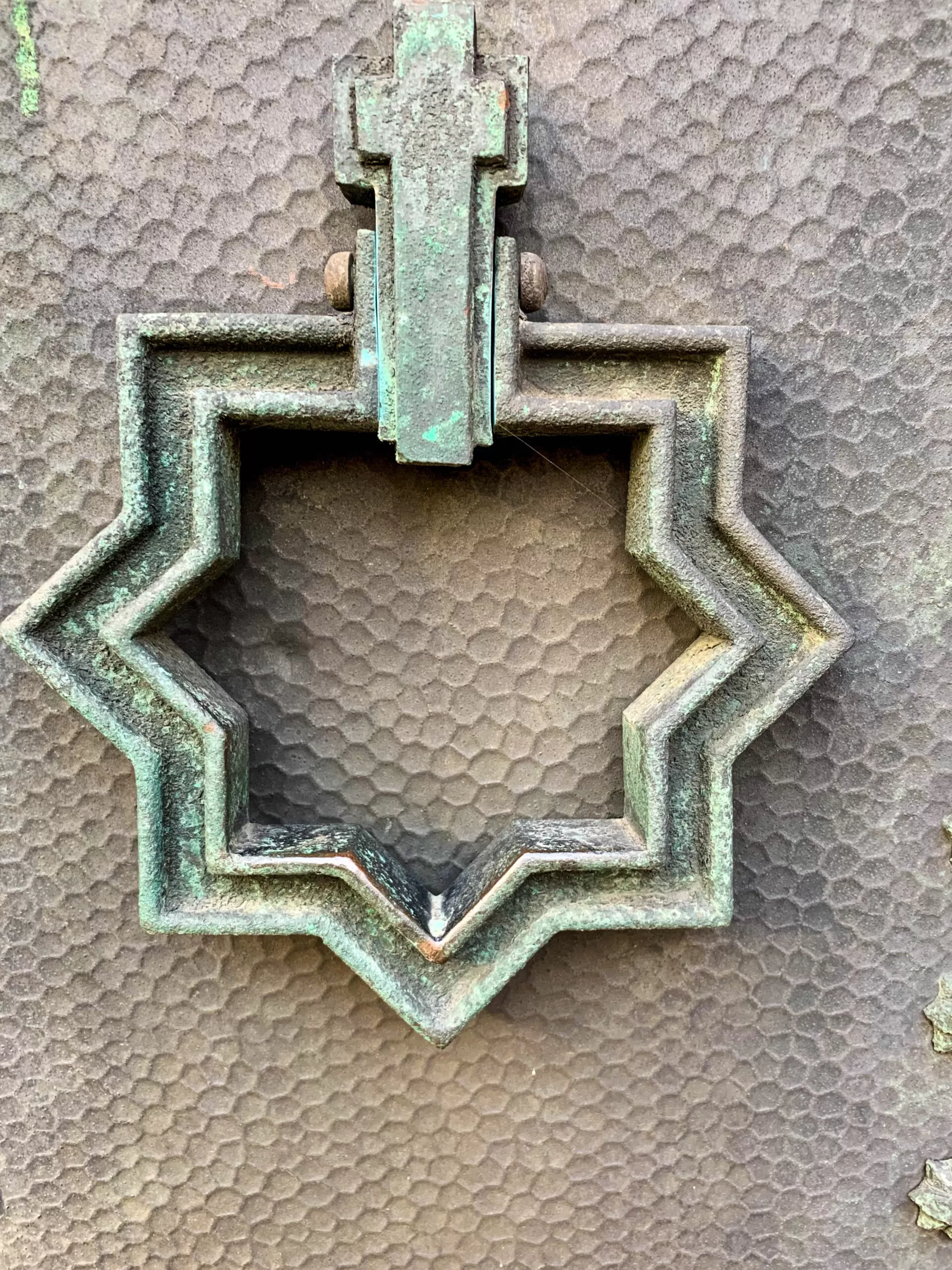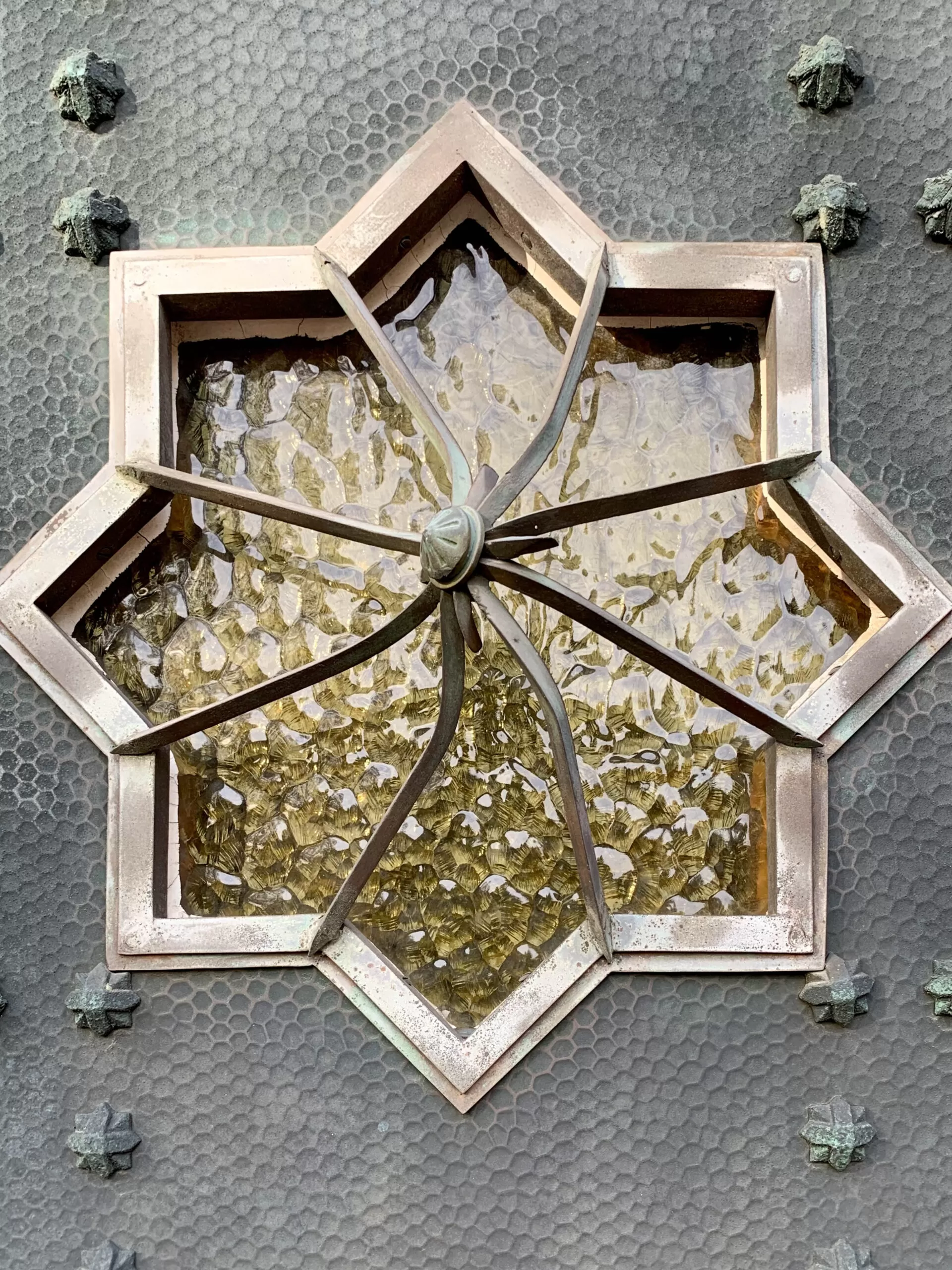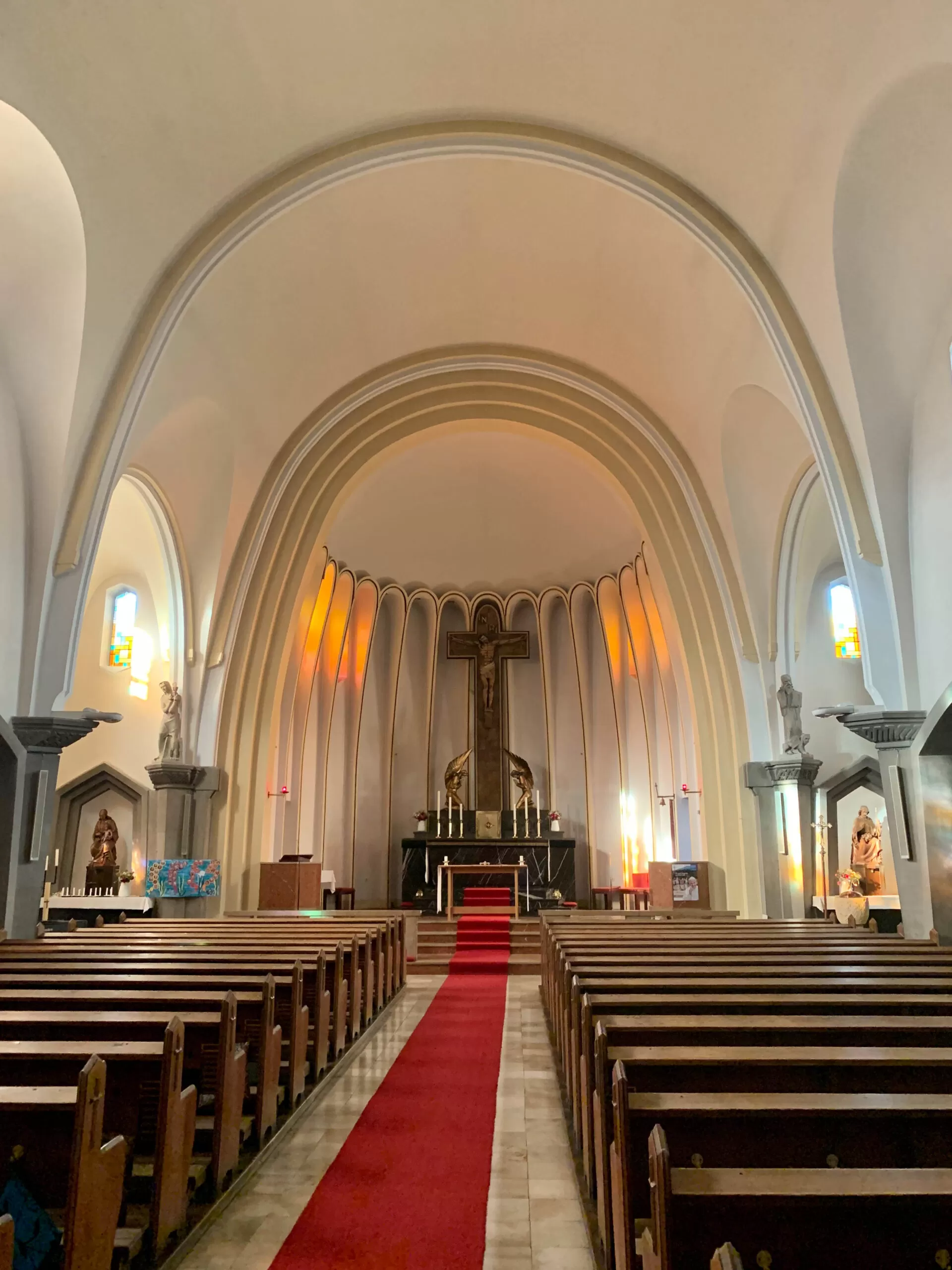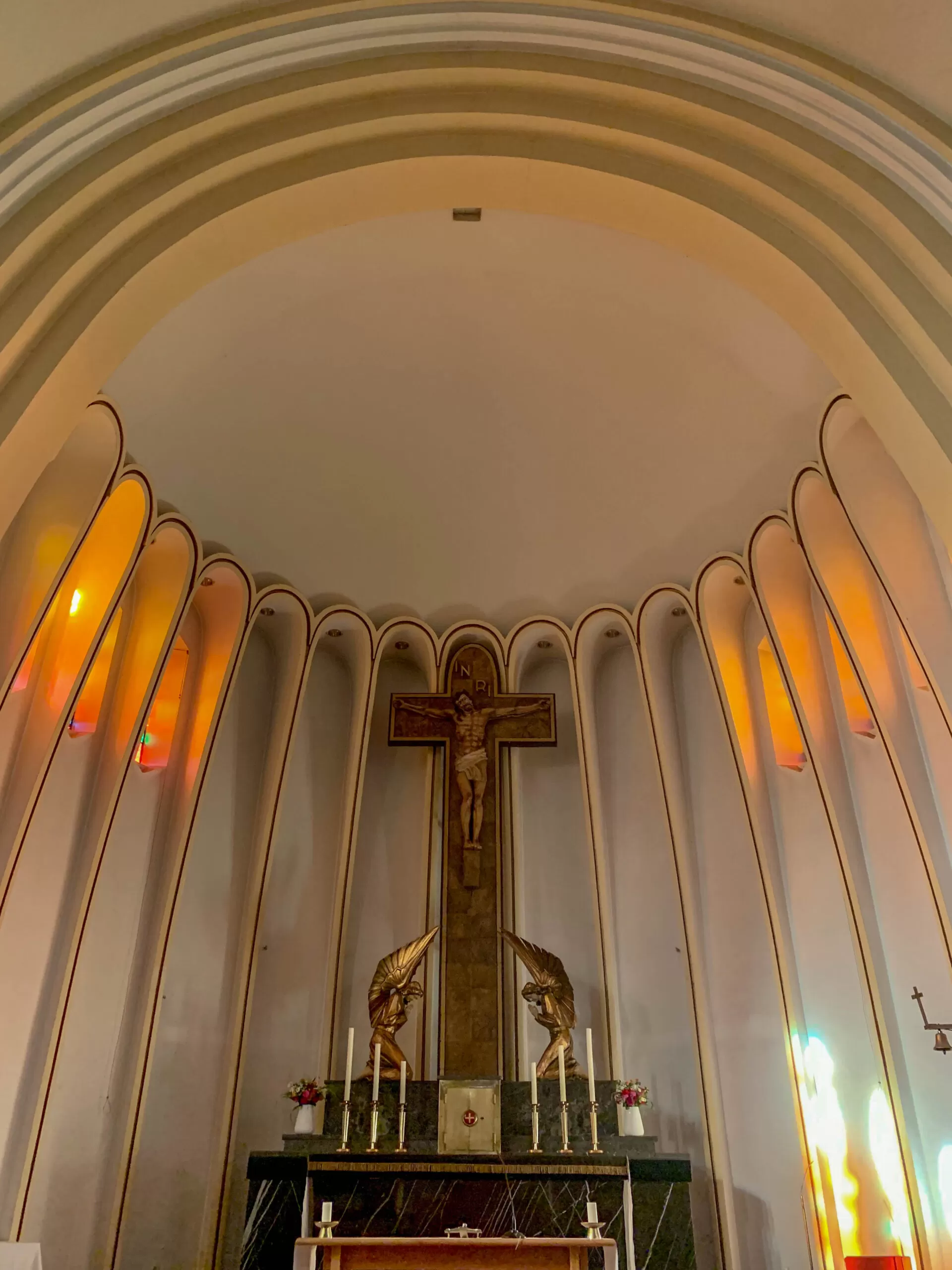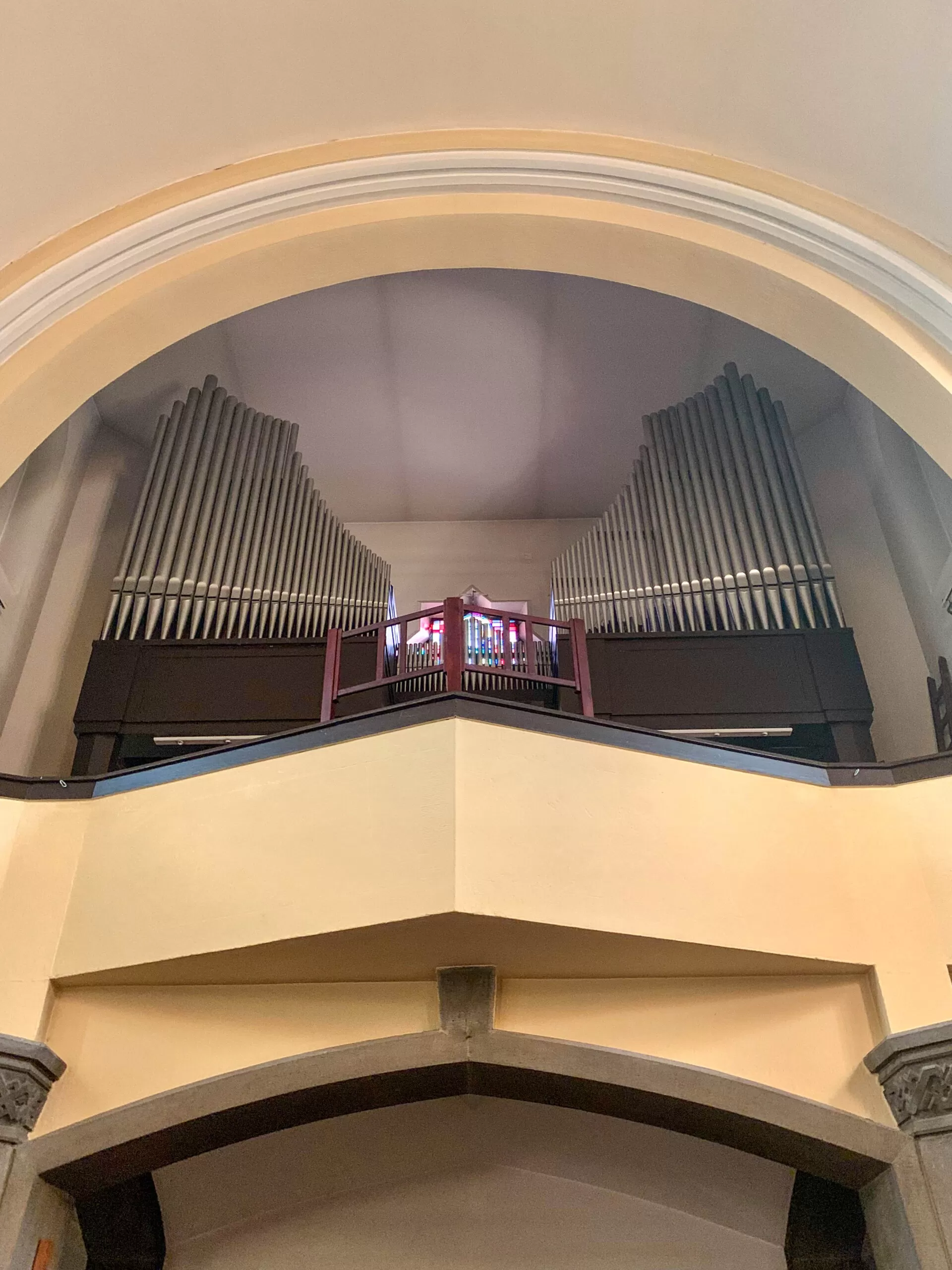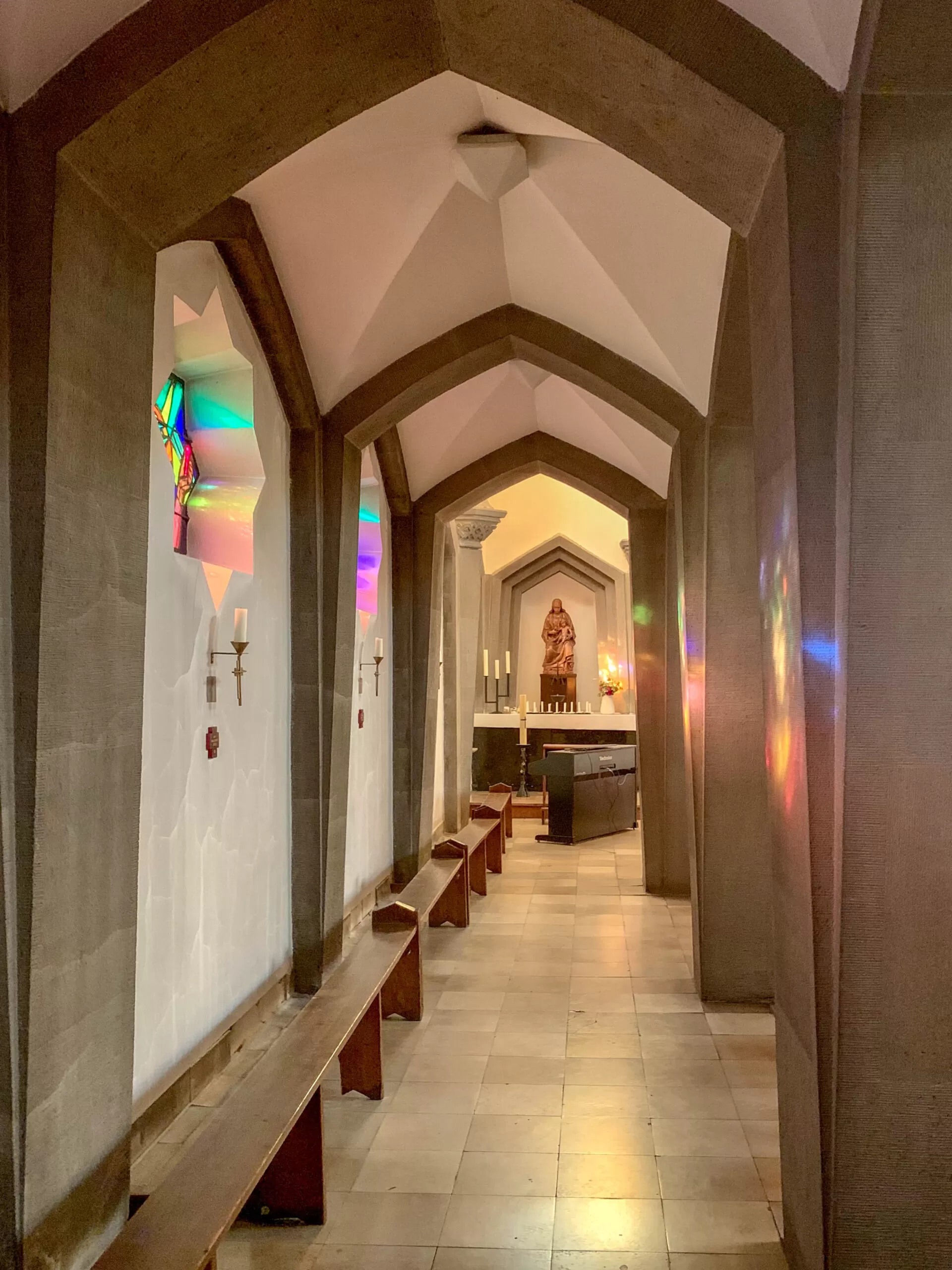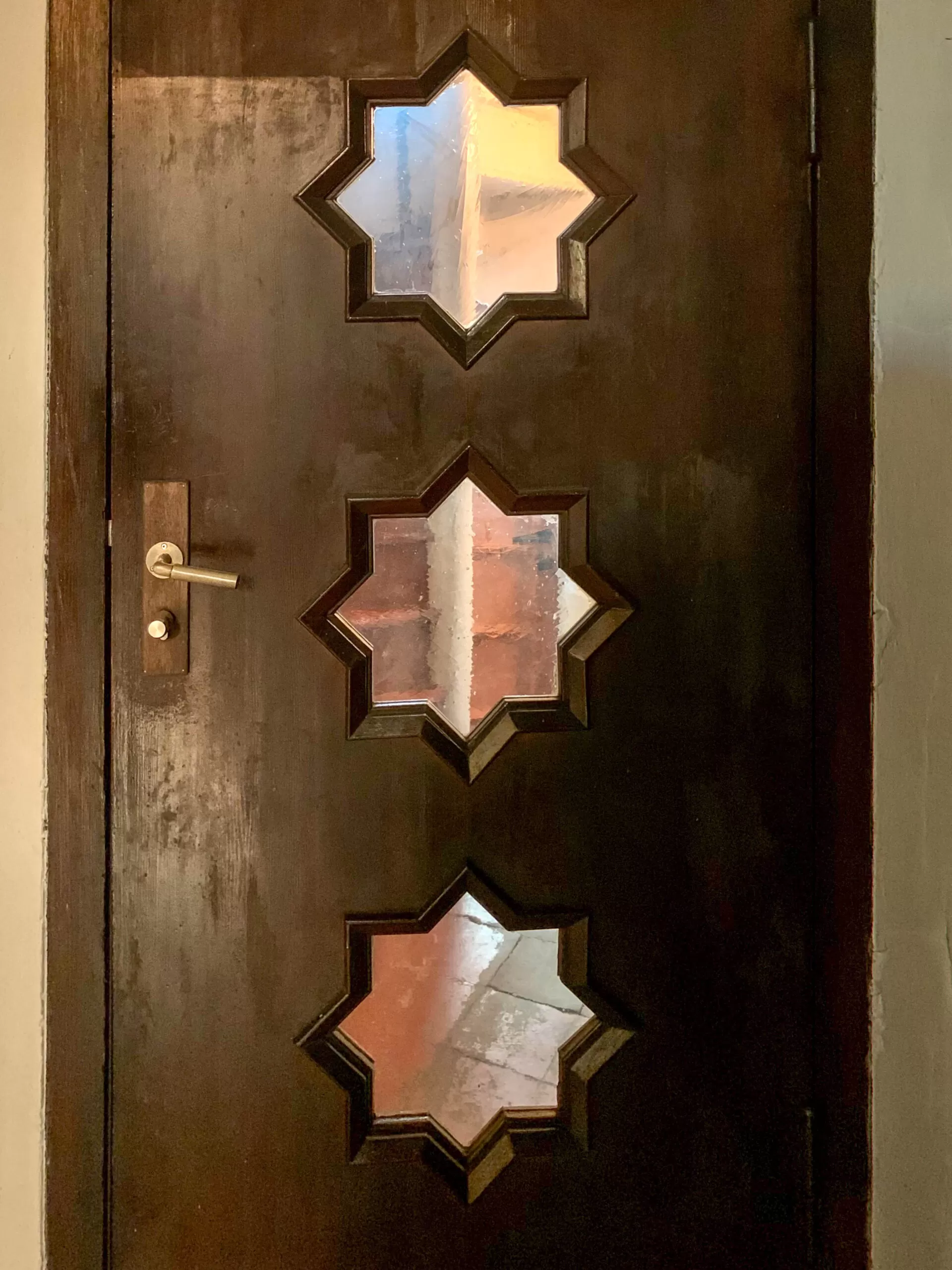1929 – 1930
Architect: Felix Sturm
Platanenstraße 22b, Berlin, Germany
Sankt Maria Magdalena
The church was built in the years between 1929 to 1930 according to a design by Felix Sturm in Berlin-Niederschönhausen.
The facade in the style of late Expressionism is clad with Beuthener clinker bricks.
Background
In 1907, the Catholic Church acquired a 3600 m² plot of land in Platanenstraße with the intention of building a church there.
On October 2, 1924, a church building fund was established, and by November 1927, a basic amount of about 19,000 Marks was available.
However, the construction price was much higher, so that an application for financing was submitted to the Catholic Association of Greater Berlin.
The latter agreed to the construction of the church on the condition that the parish would have to bear the costs for the complete interior decoration itself.
Architect Felix Sturm from Pankow completed the design for the new church building, and the cornerstone was laid in May 1929.
In September 1930 the church was consecrated in the name of St. Mary Magdalene as the church patroness.
Building
The facade decoration on the tower is formed by story cornices, knob-like protruding cornerstones and triangular windows.
Above three sound arcades of the same size, arranged next to each other in polygonal form, there are stepped cornices, finished with a flat tent roof.
The tower is surmounted by three spire crosses, originally covered with gold leaf. Inside hang three steel bells newly installed in 1959.
Interior
The interior of the church is accessed through rectangular double doors with star motifs designed by sculptor Paul Halbhuber. This star motif is repeated in the shape of the window above the portal.
A relief image above the portal, also designed by Paul Halbhuber in 1930, shows the appearance of the Lord after the Resurrection.
It bears the inscription Soli Deo Honor (Glory to God alone).
The interior of the church is largely original.
A semicircular apse with its vertically upward parabolic converging articulations surrounds the altar.
The vault parts are self-supporting and made of reinforced concrete. All piers in the nave and aisles as well as the triumphal arch and the gallery parapet are clad in shell limestone concrete.
For the most part, the church was spared war damage, except for the windows, which were partially destroyed.

